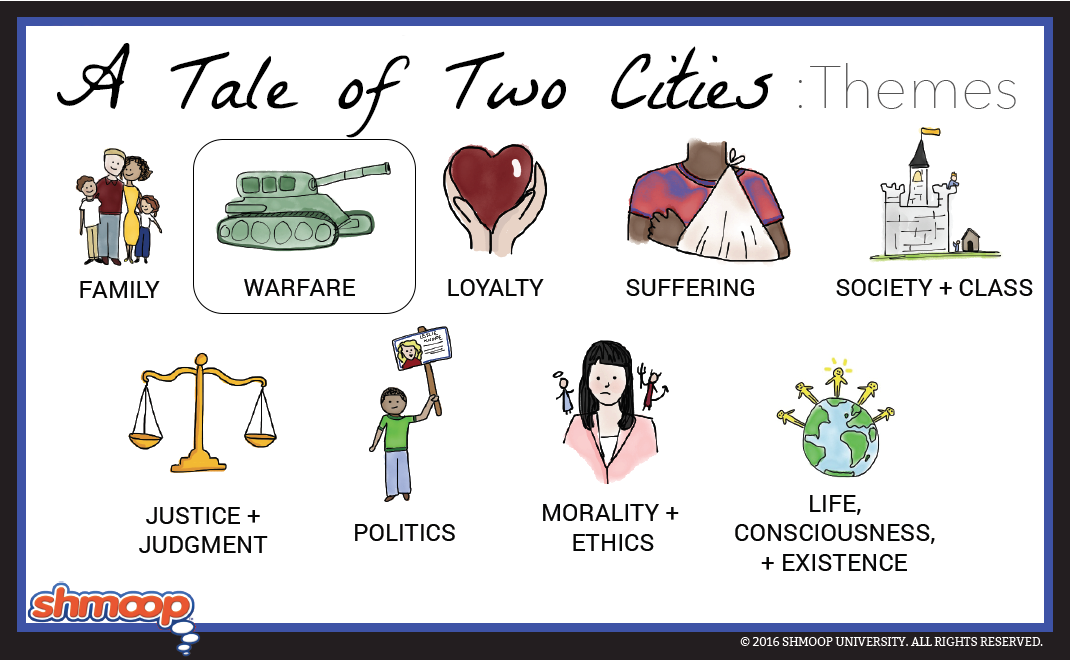 (Click the themes infographic to download.)
(Click the themes infographic to download.)
The French Revolution. The storming of the Bastille. The formation of the new Republic. Sound like the multiple-choice answers to your next history test?
Well, yes. But they’re also all important topics that work their way to the center of A Tale of Two Cities. As the poor and downtrodden of France take to the streets, they spark a bloody and violent revolution. Blood runs through the streets of Paris, entire families hang in the balance of new (and often unjust) laws, and no one can be sure of their future in the first years of the Republic. Dickens’s novel explores the complicated relationship that emerges between the political and the social consequences of revolution.
Questions About Warfare
- What justifies the French citizens’ revolt? At what point does it become unjustifiable?
- Are there forms of violence in the novel that Dickens critiques? Do you agree with his critique?
- Are there moments when the novel seems to think violence is an appropriate course of action? Do you agree? Why or why not?
- Are the executions at the end of the novel a continuance of warfare?
Chew on This
Although the violence depicted in A Tale of Two Cities is horrible, it’s also the only way that a new form of government can emerge.
The senseless violence of the revolutionaries quickly undercuts any moral authority they had to create a new social order.